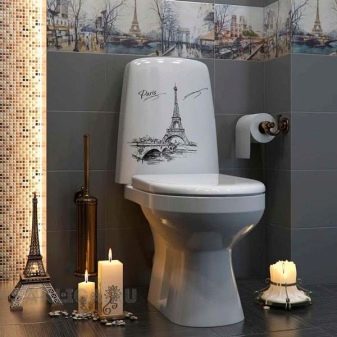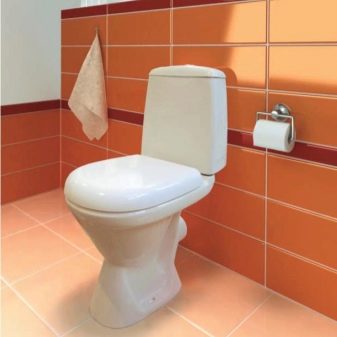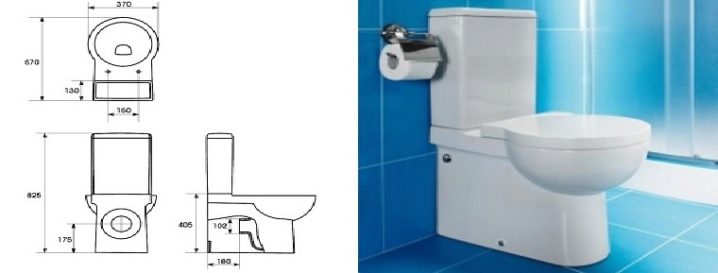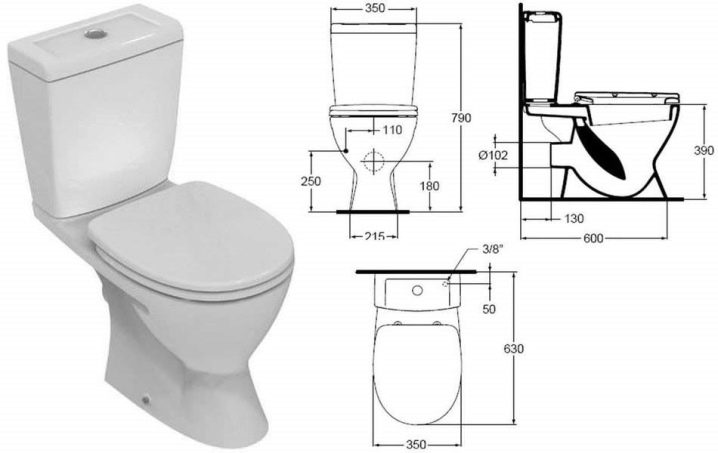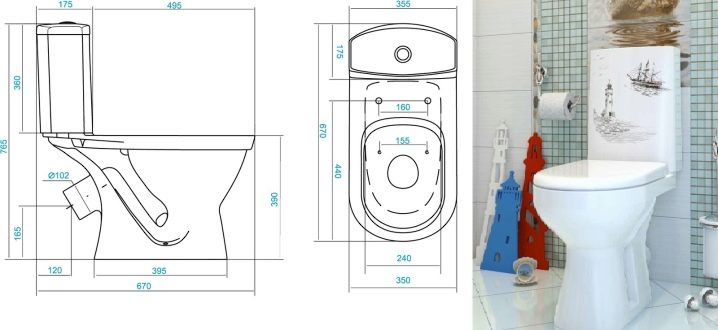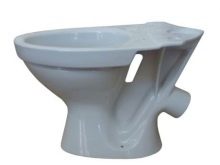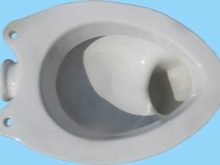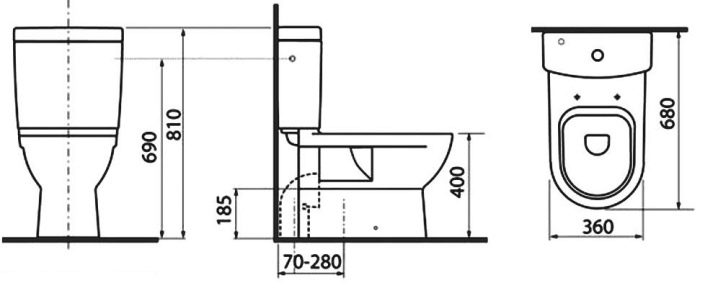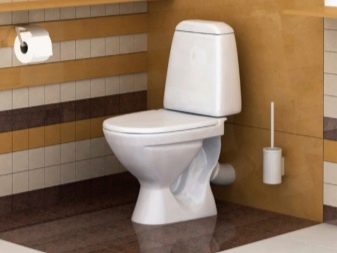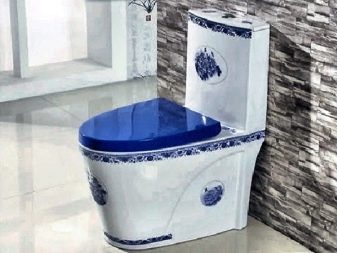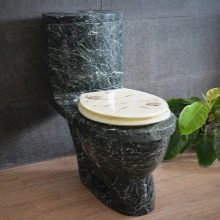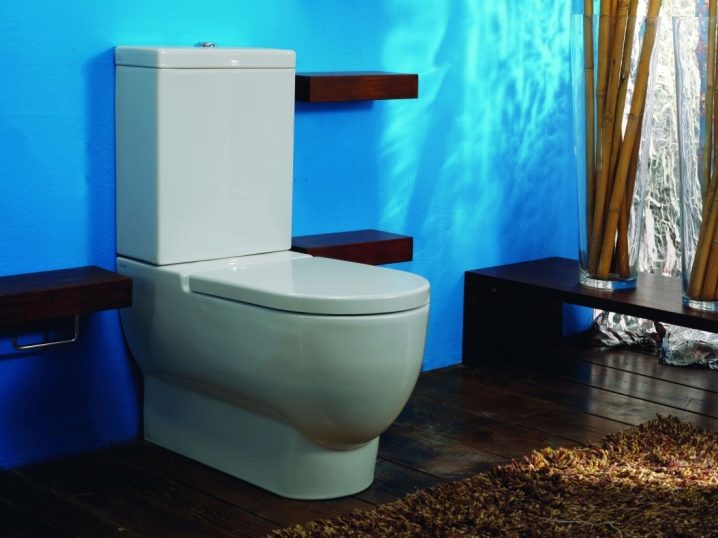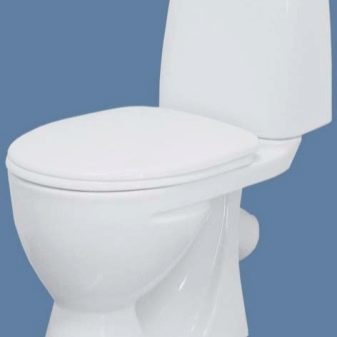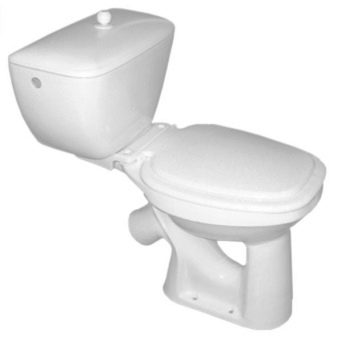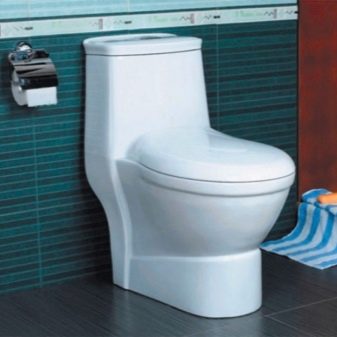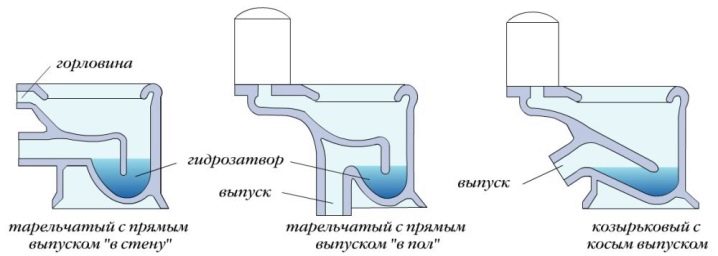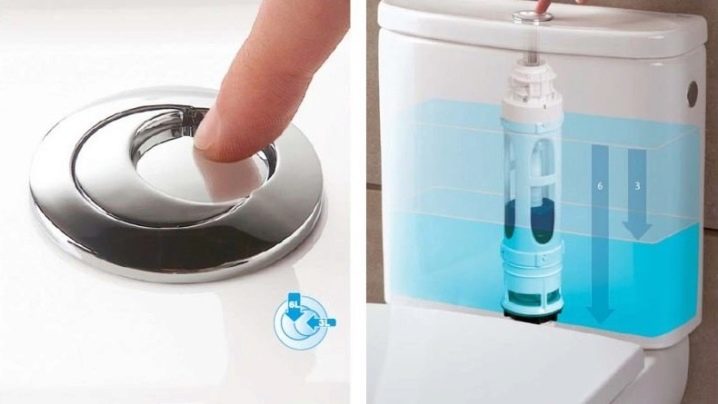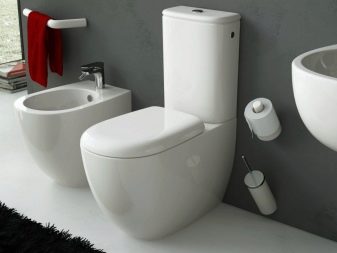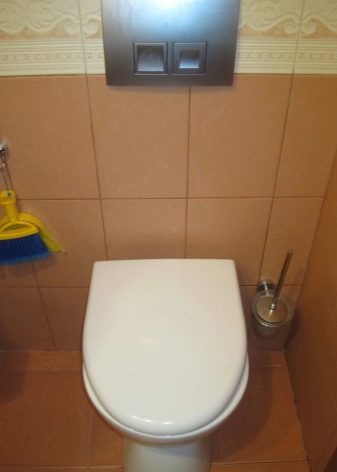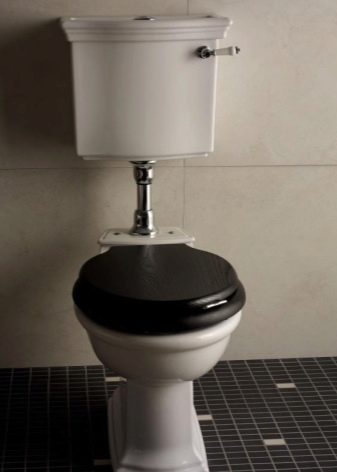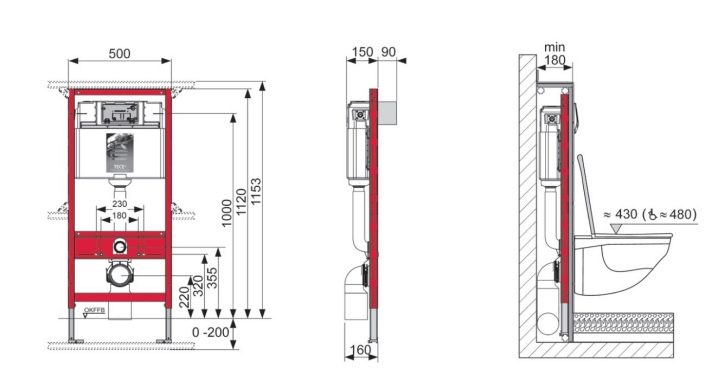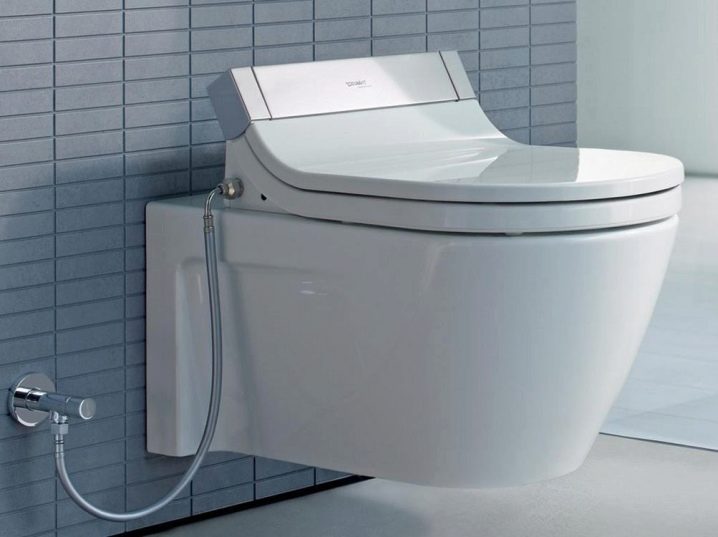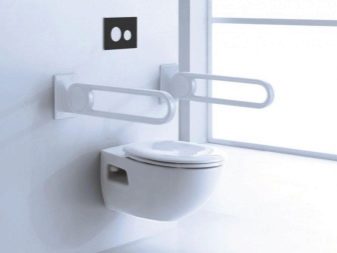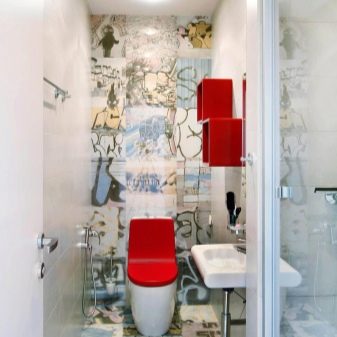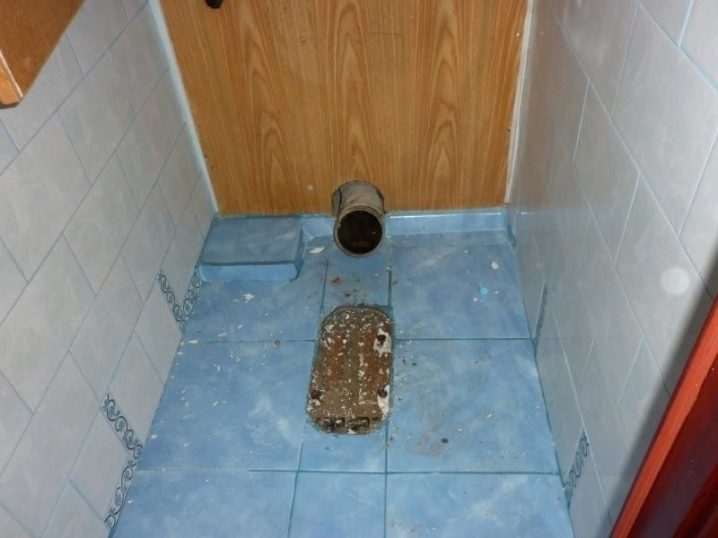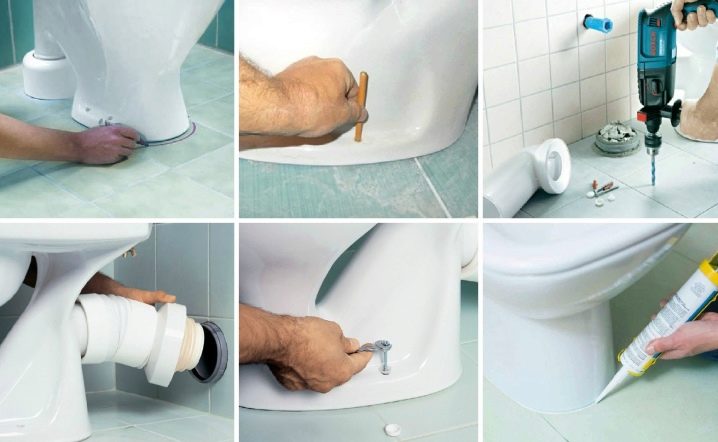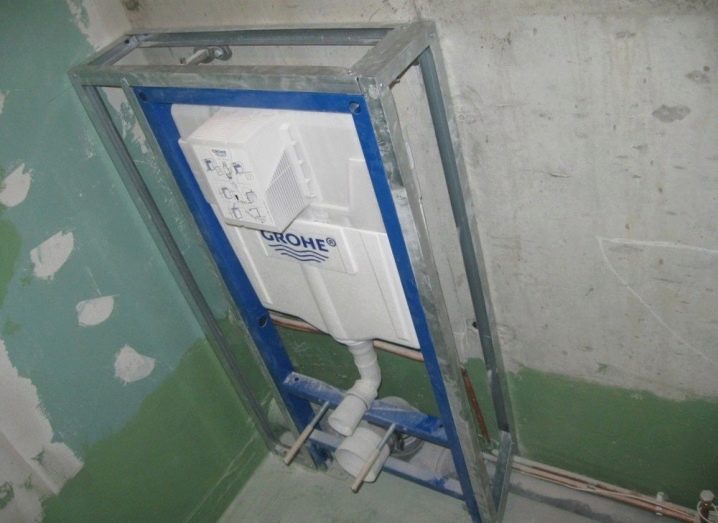What are the sizes of the toilet?

Toilet and bathroom are integral elements of the dwelling of a modern person. However, the first is not always characterized by a large area, so apartment owners have to be smart to place the necessary plumbing. However, even if the size of the toilet allows, it is important to correctly calculate the size of plumbing and other items to create a convenient to use bathroom.
What parameters are found?
In the modern market you can find toilets from domestic and imported manufacturers. The sizes of the first correspond to GOST, their standard sizes depend on the type of device.However, the differences are not critical, and the device with the parameters of 380x480x370-400 mm is considered the most convenient.
There are three types of devices in terms of size:
- small (length not exceeding 54 cm);
- standard (length dimensions vary between 54-60 cm);
- large (have a length of more than 60 cm, maximum - 70 cm).
Large devices have impressive dimensions, as a rule, they are chosen by overall users. In this regard, not only the size of the toilet bowl is important, but also its ability to withstand weight up to 500 kg.
The most common domestic devices are the following:
- construction with a shelf (has a length of 605 mm, width is 320-370 mm, height - 340 mm);
- toilet without shelf (device length in the range of 330-460 mm, width - from 300 to 350 mm, height - 360 mm);
- children's model (with a bowl length of 280-405 mm, width - 130-335 mm, height - 210-290 mm).
Do not confuse the shelf, located in the bowl, and the shelf on which the drain tank is installed. At the moment we are talking about the latter.
Dimensions of imported devices are generally close to domestic. Width can reach 360 mm, length - 680 mm. Further in the drawing, you can see the difference in the size and design of the toilet with a shelf and without a shelf.
At the same time it is necessary to distinguish devices with a solid-cast and added shelf. Installation of a toilet bowl with an added shelf provides additional installation of the latter.
The specified dimensions do not take into account the parameters of additional devices and components. So, the sizes of a toilet bowl with a tank proportionally increase at the expense of a tank.
The weight of the structure depends on the type of material used. Earthenware toilets (the most common option) weigh an average of 26-31.5 kg. Porcelain analogue has a lower weight - from 24.5 to 29 kg.
The heaviest are toilet bowls made of marble, the weight of which varies between 100-150 kg. Among the toilets light weight - models of "stainless steel", having a weight of 12-19 kg. In addition, they are characterized by increased durability and are installed in public places at industrial sites. The lightest model is plastic, with an average weight of 10.5 kg.
Suspended models weigh less than the floor-sized ones that are similar in size, since they lack a “leg”.
The weight of the toilet bowl is also influenced by the weight of the tank, and its weight, in turn, depends on the material of manufacture and volume. A standard 6 liter ceramic tank has a weight in the range of 11 kg.With a decrease in volume, the weight of the tank also decreases.
These figures are of no small importance when installing the device in dilapidated multi-storey buildings, as well as when installing in a private house on the second floor.
Model overview
Different types of toilet bowls have various dimensions. One of the most ergonomic models is the device, a tank and a bowl in which form a single whole. The parameters of such a toilet are governed by GOST.
It is available in 2 variations:
- “Compact” with a cast shelf (dimensions 60.5x34x37 cm);
- analogue with a separate shelf (its dimensions are 46x36x40 cm).
Another model with a combined cistern - monoblock. Here, the bowl and tank are made of a single piece of ceramics, representing an integral design. The difference of the monoblock from the previous version is the absence of connecting elements between the bowl and the tank.
The production of Russian-made monoblocks is regulated by GOST, and therefore the devices have the same parameters. The width varies between 36-37.5 cm, length - 68.5–70 cm, height is 39-77.5 cm.
For small toilets, corner toilets are often chosen. They can be floor or mounted, their characteristic feature is a tank of triangular shape.The average sizes are: width - within 34-37 cm, length - 72-79 cm, and height - 45-50 cm.
Hinged or console toilet allows you to visually increase the space of the room, although to say that it is much smaller than the floor, incorrectly. In such a toilet, in view of the user, there is only a toilet bowl built into the wall and a flush button. Bowl and other communications are installed on a metal frame, called an installation, which is hidden behind the false panel. The organization of the latter also "eats" the useful area of the toilet. However, due to the built-in bowl, the space under the floor is freed, and the whole structure looks less bulky due to the lack of a tank in sight. The parameters of wall hanging toilet varies from different manufacturers. On average, they have a width of 35-37 cm, length - from 48 to 58 cm, height - 42 cm.
Dimensions of standard floor toilets are 520x340 mm with a height of 400 mm. American and European counterparts are usually 7-10 cm longer.
In addition to the size of the toilet, it is also important to consider the characteristics of the parameters of the outlet, since the size of the gap between the toilet and the wall depends on the type of connection of the device to the sewer system. The most compact toilet will be with an oblique release. The sewer pipe that emerges from the wall can be “built up” to the required parameters with the help of pipes or corner fittings. The most "capricious" are considered devices with direct release, because the system requires mounting to the floor, or rather to the pipe coming out of it. The maximum that can be thought up in such a system is a reversal of the structure along the axis in one direction or another.
When calculating the volume of the flushing cistern, it is necessary to focus on the fact that 13 liters of water are consumed per toilet. As a rule, this is a standard tank volume. You can reduce water consumption by installing a double drain system and “dividing” the tank into 2 compartments of 6 and 3 liters each. Installing such a device on average saves up to 6,000 liters of water per person per year.
There are 4 types of installation drain tank:
- monoblock (there is no connection between the bowl and the tank);
- compact version (tank on the toilet bowl);
- hidden (installed on installations);
- suspension.
The latter can be mounted high above the toilet (about 150 cm from the floor), low (up to 50 cm) or located at a height average from the floor (from 50 to 100 cm).The connection of the toilet and the tank is carried out using a special pipe.
In addition to the dimensions of the toilet, the parameters of accessories and accessories also affect the space occupied by it. So, in the organization of attached and wall models installation is necessary. Its dimensions are due to the dimensions of the toilet and can be different. Standard are frames with a width of 50 cm and a height of 112 cm.
At installation of a design dimensions of a corrugated pipe have important value. Its purpose - the diversion of water from the toilet. It is made of hard or soft plastic. With a cuff length of the device less than 130 mm, the length of the corrugations should be 200-1200 mm. Diameter - the corresponding model of the toilet, to which such a drain is fixed.
Another important element is the cuff connecting the toilet and the sewage system. It should fit the external release of the device. As for the length, the cuffs are long and short (112-130 mm).
Atypical case
Atypical cases usually include devices for large or small premises, as well as devices for people with disabilities.For a spacious bathroom, it is recommended to choose overall (large) toilets and devices with built-in bidets, for small ones - corner or children's sanitary devices.
Among the toilets custom sizes - for children. It is noteworthy that it can be used not only in children's institutions or families with children - such a device can be installed in a small-sized toilet for adults. A prerequisite - the whole room must be made in the style of minimalism, otherwise there is no inconsistency.
The sizes of domestic children's toilet bowls according to GOST are 29x40.5x33.5 cm. Analogues of foreign production are somewhat larger - the width can increase to 35 cm, length - to 59 cm.
Toilets with bidets also have different parameters from other devices. As a rule, they are more elongated, since a system of washing nozzles is mounted on their rim. The tank of such toilet bowls can also have large volumes. The floor-standing toilet with a bidet usually has a length of 700 mm and a width of 410 mm. The suspended structure is characterized by the following parameters - 485x365 mm.
Toilets for people with disabilities deserve special attention. These can be custom-made appliances, or standard toilet bowls equipped with handrails, a special seat, and so on. Such designs differ in height - they should be 10-20 cm above standard toilet bowls. If a person moves in a wheelchair, then the height of the toilet bowl should be identical to the height of the wheelchair, usually 50 cm. In general, the height of the toilet seat for people with disabilities is 50-60 cm. people in the recovery period after surgery or serious injuries.
If you can not install a special toilet, you can purchase lining. They are seats that are attached to any toilet and increase its height. Cover plates have handrails. By the way, the latter can be mounted on the wall or mounted directly to the toilet.
How to calculate?
First of all, it is necessary to determine the place of installation of the toilet and calculate whether it will fit into the toilet. It should be remembered that at least 25-30 cm of free space should remain on each side of the device.The minimum distance from the device to the door or the opposite wall is 70 cm.
In addition, you should clarify the distance from the wall to the center of the sewer pipe. It should not be large, otherwise you will need to install an oversized connecting hose. But the minimum distance is inconvenient - the pipe will interfere with the installation. This parameter is an indicator of how far the toilet will be moved away from the wall.
For constructions with horizontal discharge, the sewage system is inserted 18 cm from the floor, for devices with oblique release, from 20 cm.
When installing a toilet bowl with a built-in tank or a hinged model, you should include the dimensions of the installation and false walls in the calculations.
It is possible to find out the approximate dimensions of the toilet bowl, the use of which will be convenient in a particular room, by measuring the depth of the room and dividing it by 2. The resulting figure will be an approximate length of the device. Relative to her set the rest of the toilet.
For larger rooms, large bowls should be chosen.may choose combined with a bidet device. For small-sized toilets, compact floor-mounted or suspended-type models are recommended, as well as corner structures with installation.
It is recommended to select such a device, which will be convenient for the most dimensional or high family member. The height of the structure should be comfortable for the person sitting on it. He should not experience tension in his legs, having the ability to completely lower the foot to the floor. As for the width, it must be "correct." When the toilet bowl is too narrow, the bezel “cuts” into the legs, with a wide clamping of blood circulation in the legs.
When choosing a toilet for a child, you need to remember that it is growing rapidly. In this regard, the size of the device selected for the child’s dimensions should be increased by 20%. This will allow to change the toilet less often.
Installation of separate equipment for children is advisable if there is enough space in the toilet. Otherwise, it is wiser to install one toilet, and for children to buy a special pad.
Installation recommendations
Installation of a toilet bowl is a relatively simple process, in most cases such work does not require the involvement of professionals. The instruction, which is necessarily attached to each device, greatly simplifies the matter.
First of all it is necessary to dismantle the old toilet,pre-blocking water and draining water from the bowl. It is necessary to detach the mounting bolts, if necessary, discourage the bowl from the floor and the sewer pipe.
The next step is to provide a flat and smooth floor surface for installing a new device. While the base is preparing and drying (for example, after screeding the floor or leveling it with cement mortar), it is necessary to assemble the toilet. Then you should make the necessary markup. It is more convenient to make the necessary marks in the floor by placing the bowl on the prepared base and marking the fixing points with a pencil (there are special perforations on the toilet’s “foot”, through which you can draw the points on the floor with a pencil).
The toilet bowl inlet to the sewer is made using corrugationsThe tank is connected to the cold water pipe with a flexible hose. The latter is fed to the tank from the bottom or side.
After the toilet is installed, it is necessary to seal all joints with silicone sealant and give the sealant time to dry out. After that, you need to make a control use of equipment (several times to flush the water) and check the correctness of the system. If everything is in order, you can mount the seat.
Installation of a hidden tank begins with the installation of the installation on which the tank is mounted. Further, the work stages are identical to those described above, the process is completed by checking the correctness of the work and the subsequent installation and decoration of the false wall.
In the next video you can visually see how to install the toilet with your own hands.
